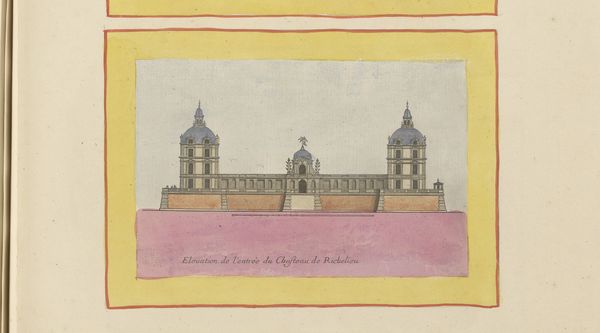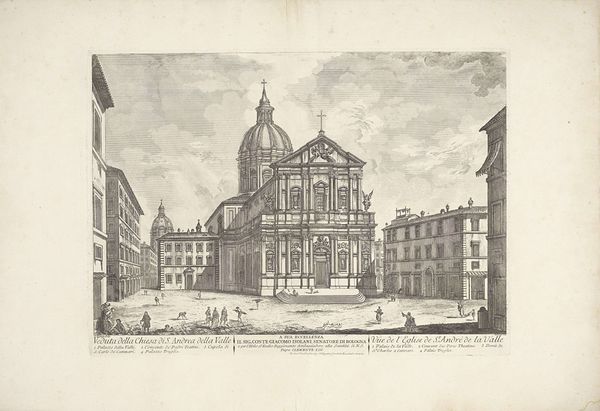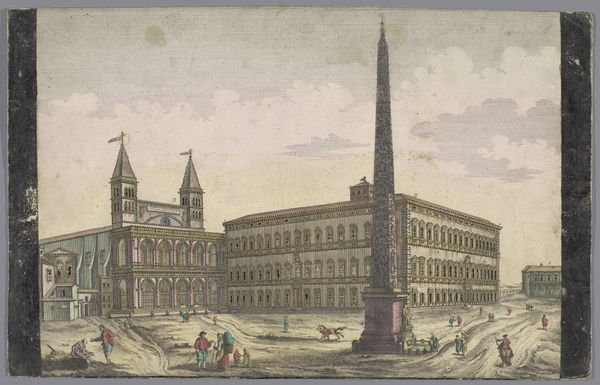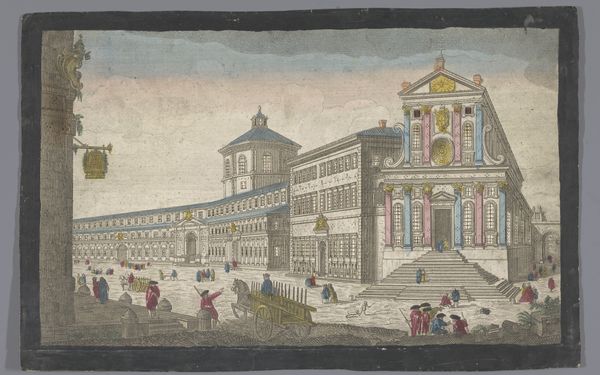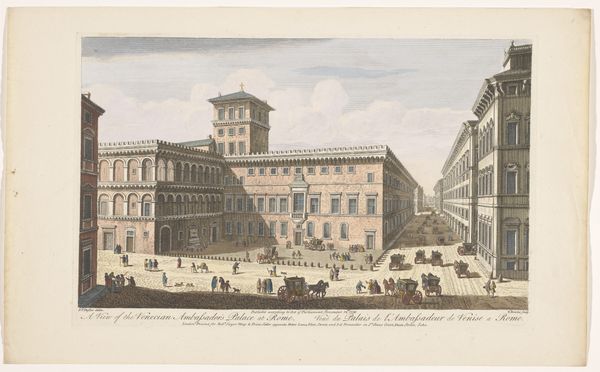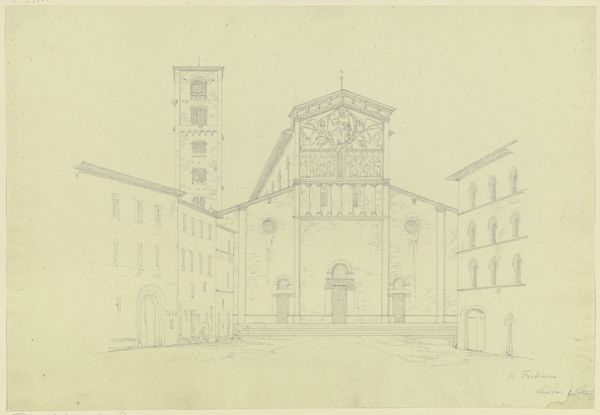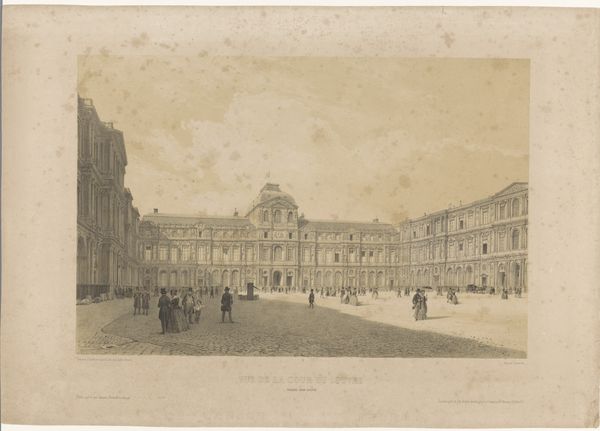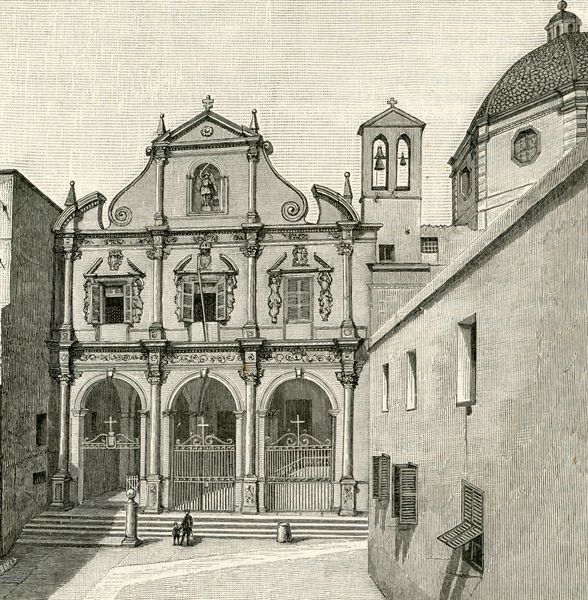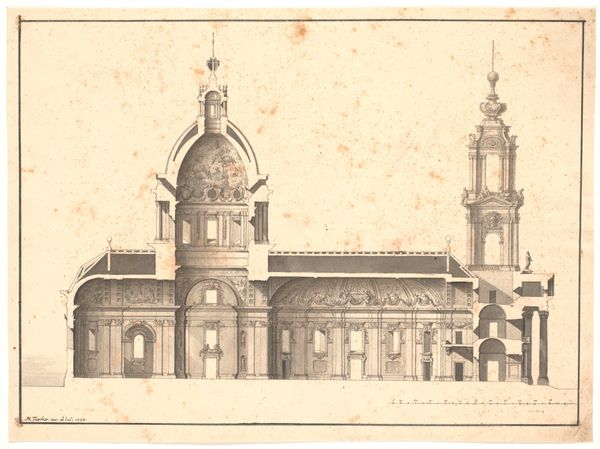
Gezicht op de binnenplaats en de toegang tot de kerk van San Lorenzo in het Escorial 1694 - 1737
0:00
0:00
drawing, coloured-pencil, print, paper, engraving
#
drawing
#
coloured-pencil
#
baroque
# print
#
landscape
#
paper
#
coloured pencil
#
cityscape
#
watercolour illustration
#
engraving
Dimensions: height 165 mm, width 253 mm
Copyright: Rijks Museum: Open Domain
Curator: My first impression is the way the towers draw the eye, those two dominant vertical lines against the softer washes of the sky. It feels like a stage set. Editor: Indeed. What we have here is "Gezicht op de binnenplaats en de toegang tot de kerk van San Lorenzo in het Escorial," a cityscape rendered in coloured pencil, engraving, and other printmaking techniques. The artwork dates to somewhere between 1694 and 1737. Curator: Late baroque, I'd guess, from the geometry. It's quite orderly. All those repeating windows marching in line give this place an almost oppressive grandeur. Like a beautiful prison. Editor: It certainly embodies the architectural philosophies of the period, showcasing the era's fascination with perspective and symmetry. Observe how the artist uses linear perspective to lead the viewer's eye into the depth of the courtyard. The interplay between the facade of the church and the surrounding structures is meticulously arranged. Curator: The use of colour, while subtle, contributes to the atmosphere. Those pale blues and pinks in the sky… almost dreamlike. They provide a striking contrast to the rigid geometry of the building itself. But they are very delicate tints aren’t they? And note the sharp lines which show the process, the matrix. Editor: And let's not forget that the drawing also functions as a historical document, capturing not just the physical space but a moment in time. It serves as a record of artistic practices and architectural styles prevalent in that era, specifically during the reign of Philip II, who commissioned this, correct? Curator: That's right. Knowing this artwork is currently held at the Rijksmuseum certainly puts it into a broader dialogue on the purpose of historical record keeping, how even views can have multiple uses. The more you look, the more that grid of windows starts to feel endless… slightly unsettling, perhaps? Editor: I agree that the piece evokes complex emotions. We began looking at structure and now circle to purpose and impact, as the methodology suggests. It’s satisfying to follow how an artwork like this invites the audience to appreciate historical methods of both architectural planning and the practice of recording these views as information and indeed, as cultural product.
Comments
No comments
Be the first to comment and join the conversation on the ultimate creative platform.
